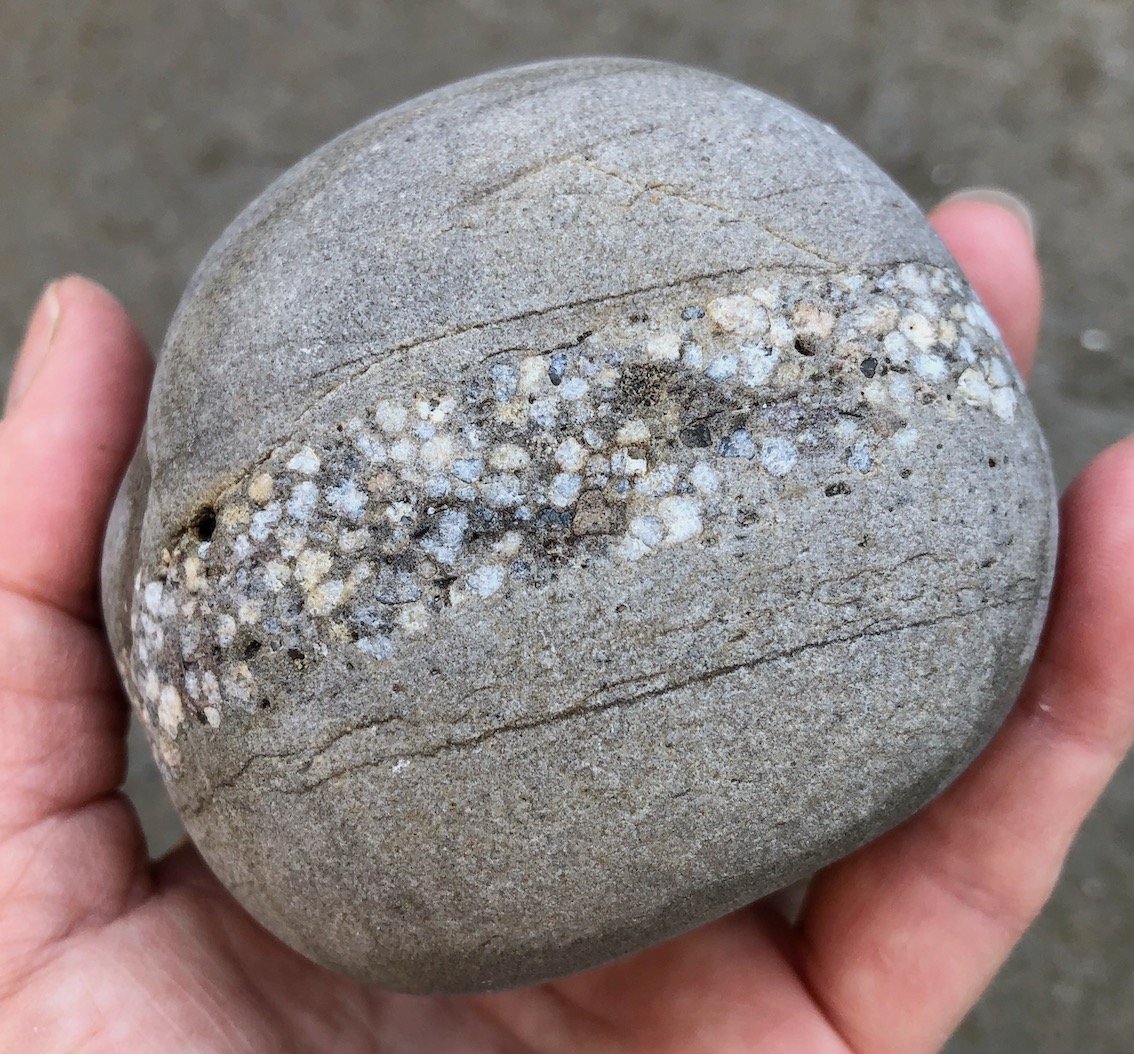Walking the beach at Port Eynon recently, a striking cobble caught my eye. At first glance it was attractive but on closer inspection I realised there was much more to it than first met the eye.
Plain at both top and bottom it contained a remarkable speckled central ‘band’. These different layers of rock show an ancient dynamic geological history, with changes occurring in the types of sediment laid down. The coarser grains in the middle show a higher degree of energy in the sea at the time, for example stronger current or waves. The finer sediment above and below show calmer, more tranquil, conditions.
This reading of the rock resonates with me as it directly reflects one of the study mechanisms currently being used by the International Thwaites Glacier Collaboration . By examining sediments in the sea where the glacier ends now, this data will contribute to determining when there was last ice cover in the sea above. Different sedimentary layers are created according to whether there was glacial ice present above or not. Coarser deposit layers show there was glacial ice extant above at the time, finer sediments were laid down when there was clear sea above. Some fascinating detail for me to play with artistically, using different approaches!

